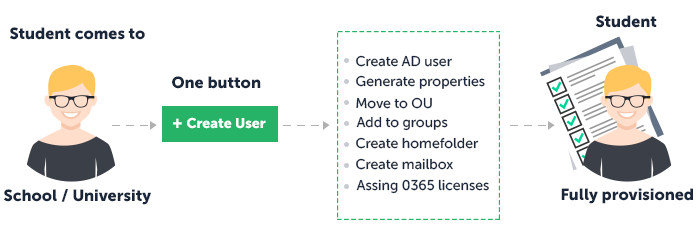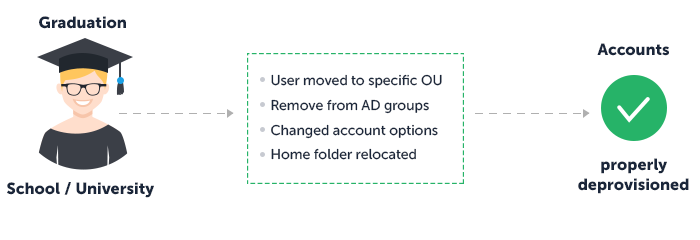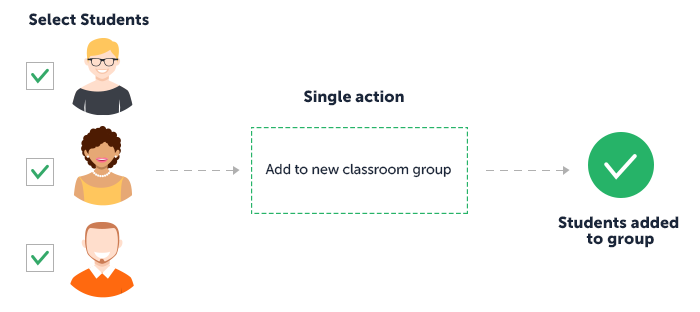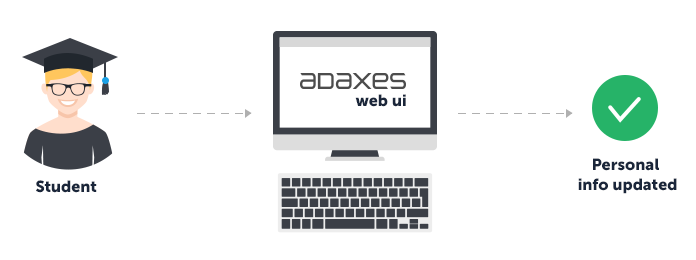Managing an AD environment in an educational institution is in many ways similar to any other IT shop, but with some specific challengers on top. For example, in addition to the everyday routine, that can be quite complex by itself, IT departments in schools and universities get those super intense periods of extra load, when new students come in and the old ones leave. Solving such situations with manual management is extremely inefficient, leaving a lot of headroom for improvement.
This is where IAM solutions like Adaxes come into the game. In this article we’ll be looking at some of the most useful features that can significantly improve the AD management experience.
Automated User Onboarding and Offboarding
The nature of education is that students come and go. This means that a lot of new accounts need to be created and properly set up and a bunch of old ones need to be deprovisioned, all that in a very tight time frame.
With Adaxes the onboarding and offboarding procedures can be fully automated, reducing them to literally one-step operations. Once a user is created in Active Directory, all the other operations like creating a home folder for the user, moving the account to a necessary OU, adding it to AD groups, creating and setting up an Exchange mailbox, assigning Office 365 licenses, creating accounts in connected systems, etc. are executed automatically. You can also add conditions to your automation rules, so that different scenarios can be executed for different types of users.

Same applies to the offboarding procedure, as it also can be reduced to a one-step task. This way you can be sure that every time a student leaves, his or her account will be properly deprovisioned and there will be no access left to your IT system whatsoever.

By automating user onboarding and offboarding, not only you save valuable time for the IT department, but also reduce the risk of errors caused by the human factor. Therefore, your environment becomes more efficient and more secure at the same time.
Bulk Operations
Working in an IT environment of a school or a uni often means that you must apply same modifications to large groups of users. E.g. if you need to transfer a bunch of students to the next year or assign them to a new course.
Adaxes gives you a lot of cool features to play with when doing things in bulk. Firstly, you can perform operations on AD objects that are scattered across different managed domains or even forests. Secondly, you can execute complex multi-step operations for multiple users in one go. This can include Exchange and Office 365 operations as well.

You can also automate certain bulk operations. For example, at the end of the year you can schedule moving all students who are not in their final year to the next one by changing a respective AD property. You can also add an additional control level with approvals that can be sent to tutors. So, no student will be moved a year up until it’s approved by the responsible authority.
Delegation of Permissions
Another characteristic of an educational IT environment is that delegating of permissions can be quite tough. A typical school or university usually has a large number of different roles and at the same time it’s all very dynamic. A lot of students and staff members can jump from one role to another multiple times throughout a year. Managing the whole thing with just native AD can be a real pain.
Adaxes makes life easier by introducing Role-Based Access Control. This means that you just need to create the roles with respective permissions associated with them and then assign those roles to users. The great thing about that is that you get a centralized place where all permissions are stored and where it all can be controlled from.
Self-Service Portal
So far, we’ve looked at how Adaxes make use for IT administrators, but it can also make life easier for end users with the help of the Web Interface.
The best feature of the Adaxes Web UI is that it’s fully customizable which makes it super flexible for all sorts of scenarios. One of them is allowing students and members of staff to perform self-service tasks. E.g. you can allow students to edit their personal information and view other users who are in the same class with them. All that from a standard web browser on any device.

You can also create custom actions that can include multiple steps but still will be resembled as single buttons, keeping everything simple and straightforward for end-users. E.g. students can add or remove themselves from distribution lists or request Office 365 licenses from their tutors.
Adaxes also allows you to create other custom Web Interfaces for any purposes. E.g. teachers can manage their own groups (classes) by themselves with no help from IT staff required. All you need is to give them appropriate access and set up the Web UI.
Self-Password Reset
In addition to that Adaxes features password self-service. Users forget their passwords all the time in any IT environments. Students and teachers are no exception. In most cases it is a primary cause of help desk calls and is a huge source of frustration both for the users and the IT staff.
Adaxes solves this problem by allowing users to reset their forgotten or expired passwords by themselves either from a Windows logon screen or from the Web Interface. All they need to do is verify their identity by answering security questions or receiving a confirmation code to their phone or email.
Conclusion
With Adaxes any educational institution can step up their game in terms of AD management. Implementing features like automated onboarding and offboarding, RBAC, Web UI, Self-Service and others can sufficiently reduce the load on the IT staff and save both time and cost.
Don’t let your IT systems to slow you down. Try a more modern approach right now with a free 30-day trial of Adaxes.
